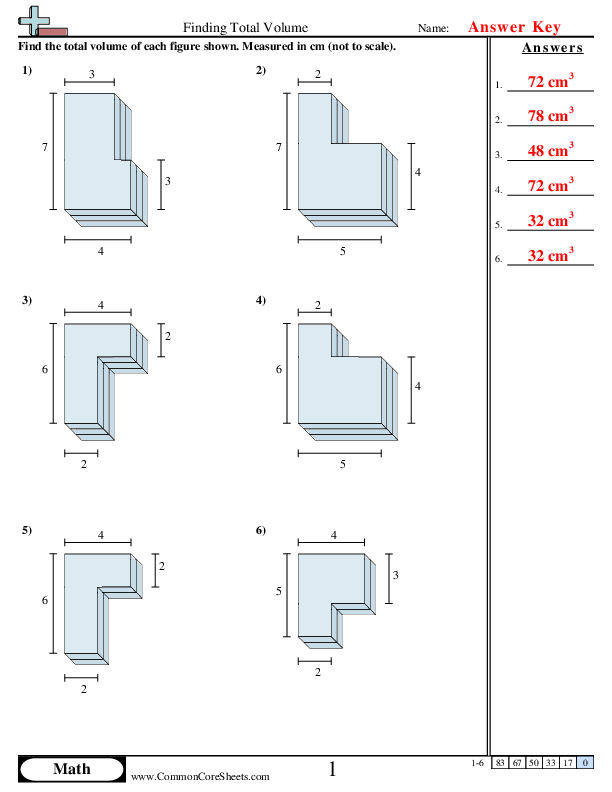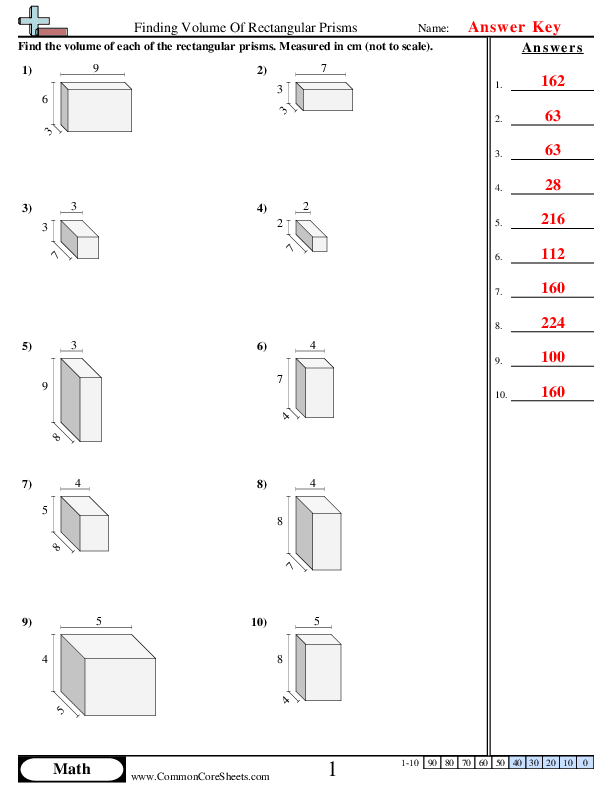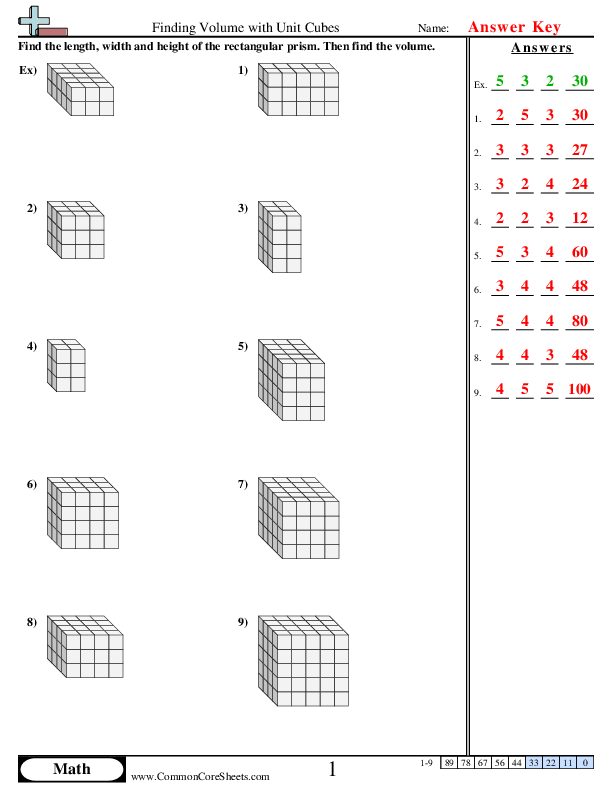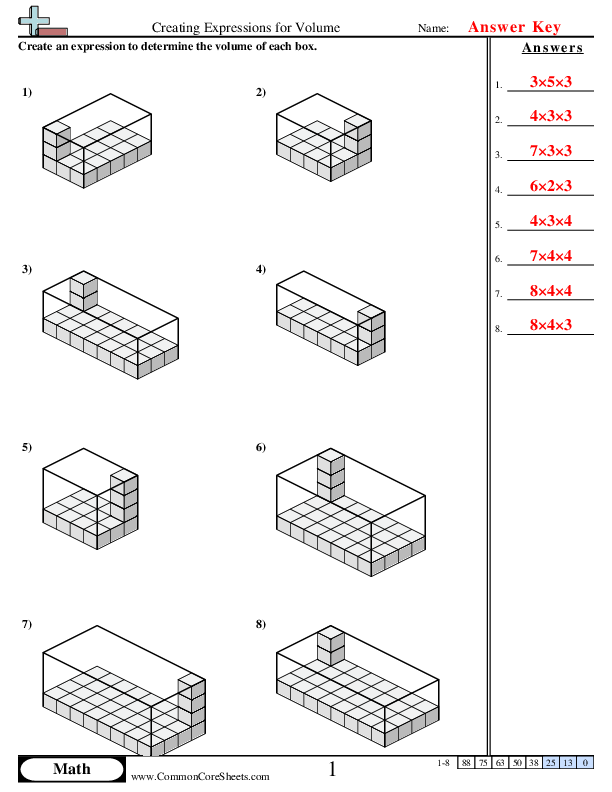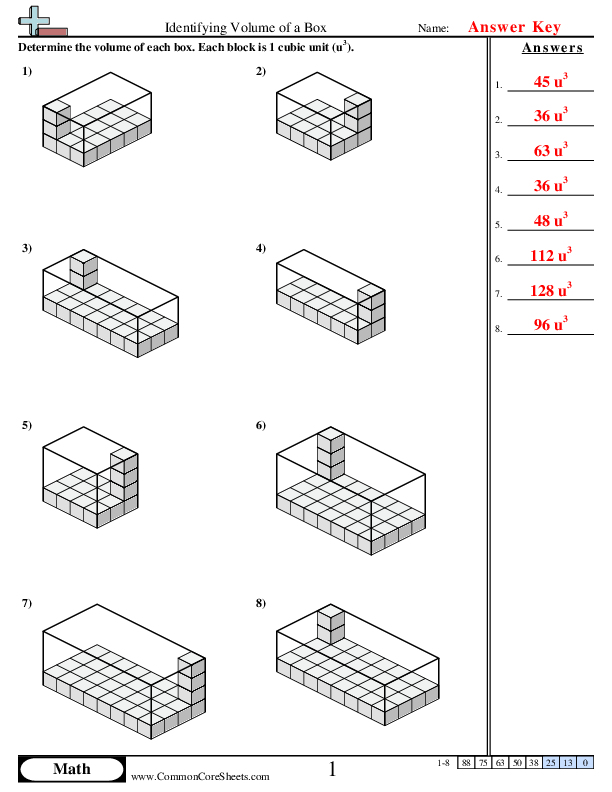Volume Worksheets
Browse Sheets By Problem Type
Rectangular Prisms
Link
Each worksheet has 6 problems finding the total volume of combined rectangular prisms.
Version 1
Version 2
Version 3
Version 4
Version 5
Version 6
Version 7
Version 8
Version 9
Version 10
Grab 'em All
Create New Sheet
Each worksheet has 10 problems finding the volume of a rectangular prism.
Version 1
Version 2
Version 3
Version 4
Version 5
Version 6
Version 7
Version 8
Version 9
Version 10
Grab 'em All
Create New Sheet
Each worksheet has 11 problems finding the length,width and height of a rectangular prism.
Version 1
Version 2
Version 3
Version 4
Version 5
Version 6
Version 7
Version 8
Version 9
Version 10
Grab 'em All
Create New Sheet
Each worksheet has 8 problems creating an expression to find the volume of a box.
Version 1
Version 2
Version 3
Version 4
Version 5
Version 6
Version 7
Version 8
Version 9
Version 10
Grab 'em All
Create New Sheet
Each worksheet has 8 problems identifying the volume of a box filled with unit cubes.
Version 1
Version 2
Version 3
Version 4
Version 5
Version 6
Version 7
Version 8
Version 9
Version 10
Grab 'em All
Create New Sheet
